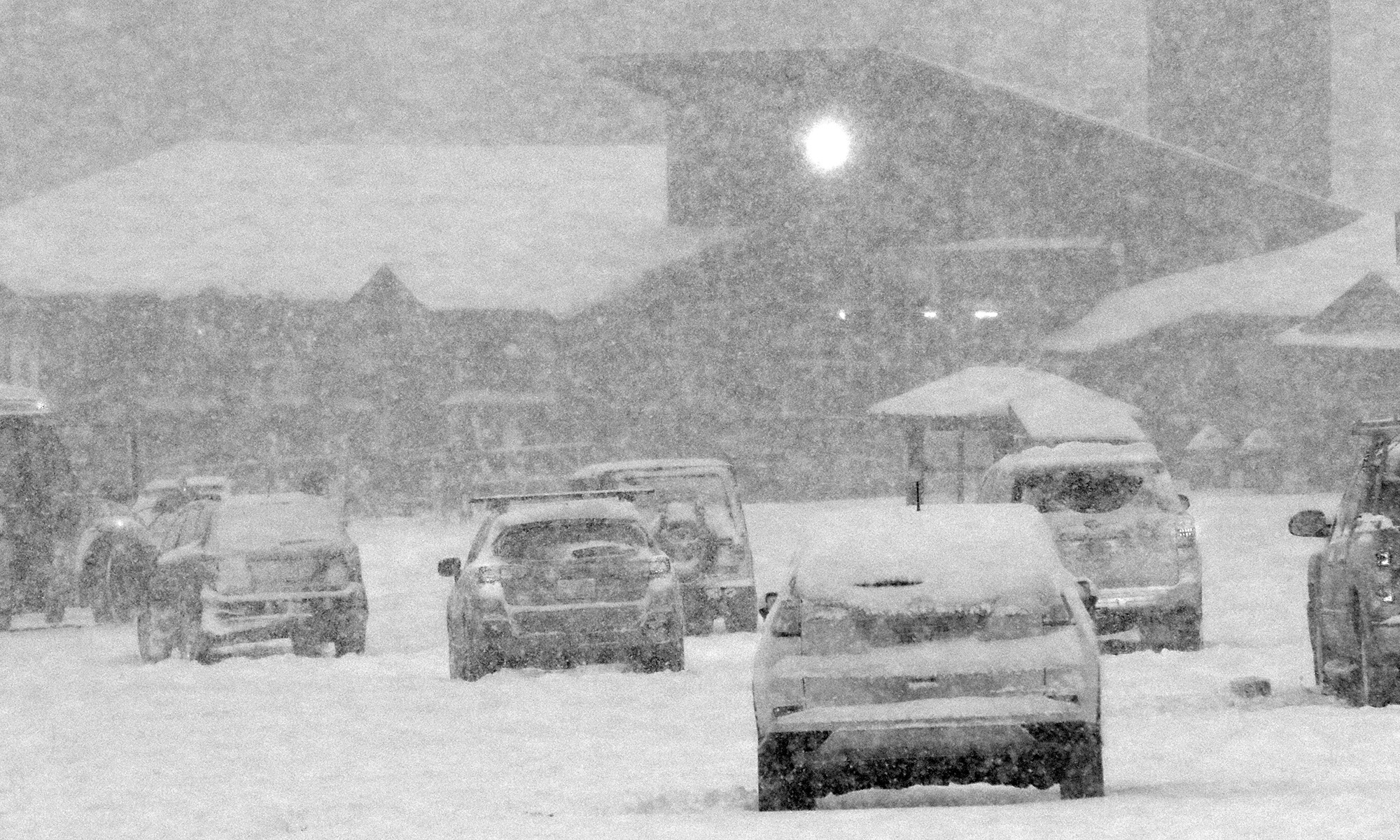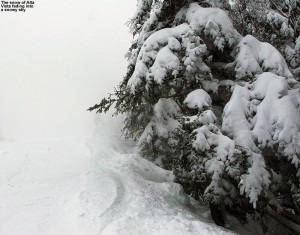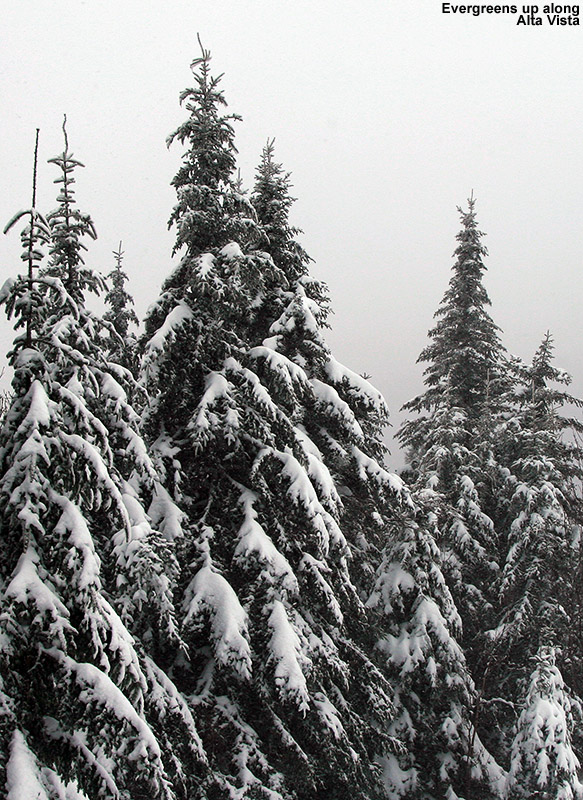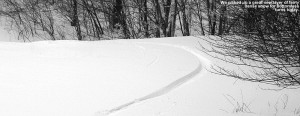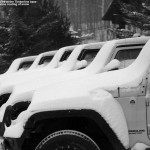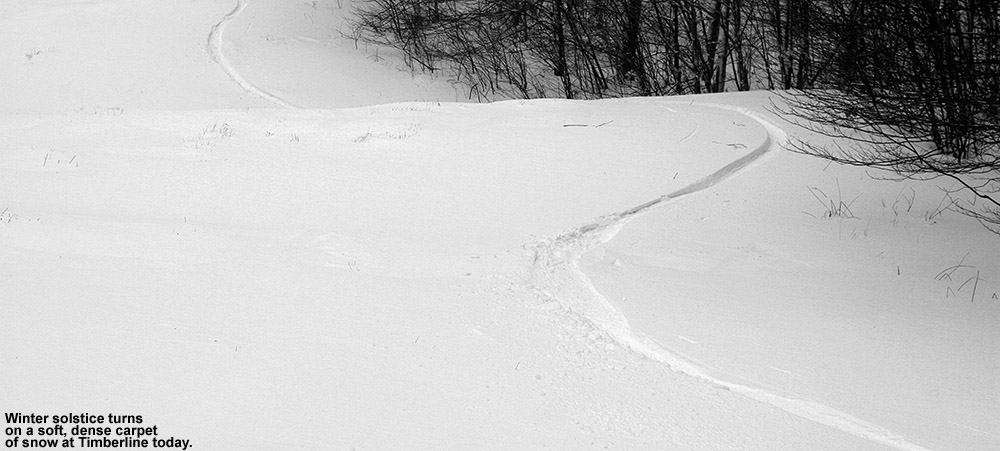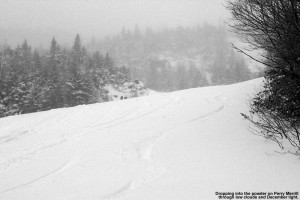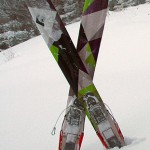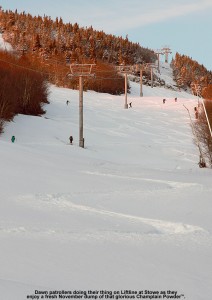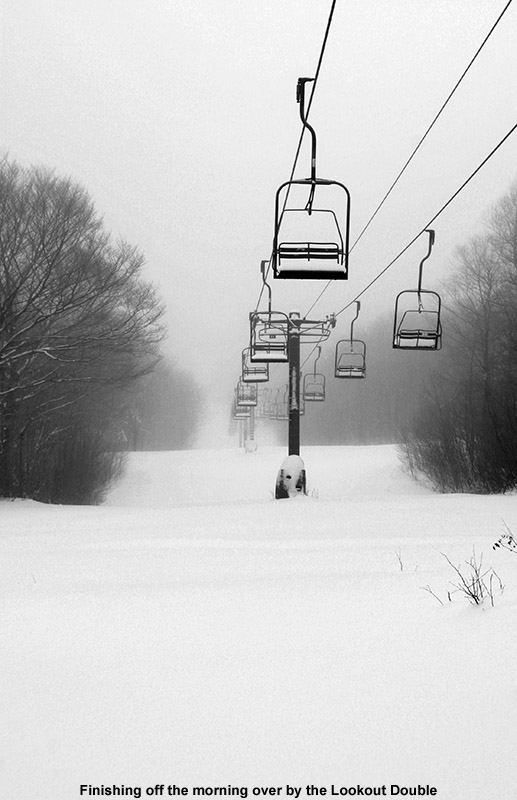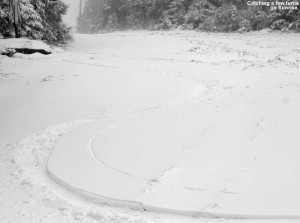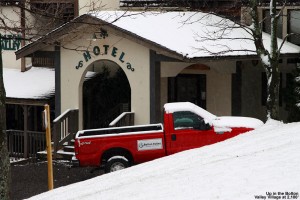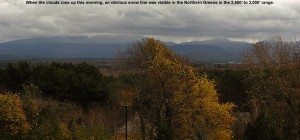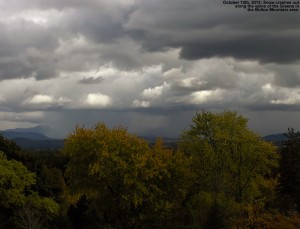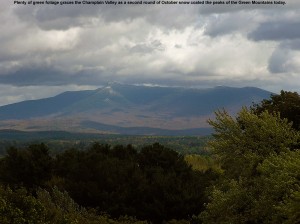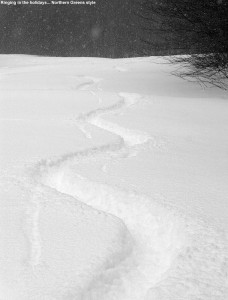
The upslope snow that started yesterday really delivered in the evening, and we got to witness it first hand as we drove off to a Christmas party in the Champlain Valley. We almost turned around right at the house as the snow was coming down at 2 inches an hour or more, and we could only see a few yards in front of the car. Fortunately that tapered off a couple miles to our west, but in the end we wound up with 9.5 inches of upslope fluff at the house, and Bolton Valley probably had over a foot, bringing them to 30 inches of snow in the past week. This snow was some incredibly high quality Champlain Powder™ to boot, with my snow density analyses coming in at 2 to 3% H2O.
This morning we got up to the resort around 9:00 A.M., and similar to yesterday the scene was fairly mellow – after dropping off E and the boys I was able to park in the third tier of the main lot. We started off with a run down Alta Vista, and it was E’s first chance to try out her Black Diamond Element skis, which are the women’s version of the AMPerage. I warned her that unlike my first experience with the AMPerages, which was entirely under powder conditions, she might not be that impressed with how they skied on the groomed areas before we made our way to the powder. Indeed she was very unimpressed, noting that there was so much ski width (115 mm at the waist) that she couldn’t even get them on edge. I hadn’t found that to be an issue for me with the AMPerages, so it could certainly be attributed to a difference in our ski styles, but I think it questions again the potential for these skis to serve as a one ski quiver for all surfaces. We got them as our backcountry/powder Telemark skis anyway, but it will be interesting to see how our usage patterns develop; being more comfortable on them so far, I might take them out on more marginal lift-served powder days, where E might stick with her narrower Telemark skis. E did point out that her Telemark ski boots are a bit loose, and she could feel the slip in them today due to the thinner socks she was wearing. Having that slip in there may make it challenging to get the pressure necessary to roll these fat skis on edge on groomed surfaces, so we’ll have to see if a better boot fit helps out, or if there’s going to be an adjustment period due to something else.
“We found a foot plus of
Champlain Powder™ over a
consolidated base – and it
was more than enough to
be bottomless…”
We made our way over to Wilderness and got into some powder, and not surprisingly, E didn’t have any issues with the skis there. But, neither did she find them to be as amazing in the powder as I had on my previous outings. Of course we were skiing in roughly a foot of amazingly dry snow over a well consolidated base, so almost any ski could handle it. We enjoyed lots of fresh turns on Lower Turnpike, and it was a bit slow with the modest pitch and all the powder, but the boys had a great time. Ty had an especially fun time straight lining sections of the powder. We also jumped into Wilderness Woods, which were being skied extensively – they’re certainly skiable, although you still needed to be somewhat cautious to avoid underlying objects. On that note, the Mt. Mansfield Stake hit 28” inches yesterday, passing the magic 24” mark that I’ve used as a measure of when those initial forays into the trees begin. Bolton even opened steep tree areas like Devil’s Playground today, so many trees are definitely ready for skiing if patrol deems areas like that acceptable.
We headed for the same route again on the next run at Ty’s request, but wound up taking the Wilderness Lift Line when Dylan led us that way. Conditions along the edges still offered up plenty of nice turns though. The boys were calling for an early lunch after those two runs, so we headed into the lodge, and eventually got a call from Stephen that he and the kids had finally made it to the mountain. We finished up our lunch and met up with Helena and Johannes to take a run while Stephen picked up his skis from the ski shop. We opted for the standard Sherman’s Pass route to let Helena and Johannes warm up. Surfaces were decent packed powder aside from wind-exposed areas, which were blasted down to whatever nasty hard surface lay below.
When we all got back together we hit Lower Turnpike again, and it felt much faster that second time. There were a few more tracks around to let you gain your speed, but somehow it was more than that. Whatever the case, the turns were smooth and silky in the powder. Johannes and Helena needed their lunch break by that point, so while they went in the lodge, E and the boys and I went back for another round. Dylan and I came in at a higher entrance and got some bonus fresh turns.
We had spotted a car over at Timberline on our way up to the resort, with the intent of finishing off the day there, but Dylan was pretty beat, so E decided that they would drive down and meet Ty and me there. Johannes had enough energy, so he joined Ty and me for the trip. Aside from windblown areas, which were reduced thanks to the lower elevation, the snow was simply amazing at Timberline as is typical for these types of events. We found a foot plus of Champlain Powder™ over a consolidated base – and it was more than enough to be bottomless, even on the Spell Binder headwall as long as you stuck to the skier’s right. That’s some pretty primo skiing. The only part to avoid was the bulk of the headwall section with sastrugi (or “fake powder” as it often looked today) from the winds. Both boys did well, and we made reasonable time down to the car, with the requisite photo sessions as well. Dylan missed some great turns, but he was certainly tired – while E was out getting a couple of final things for the holiday in the evening, I found that Dylan had gone and tucked himself into our bed and gone to sleep.
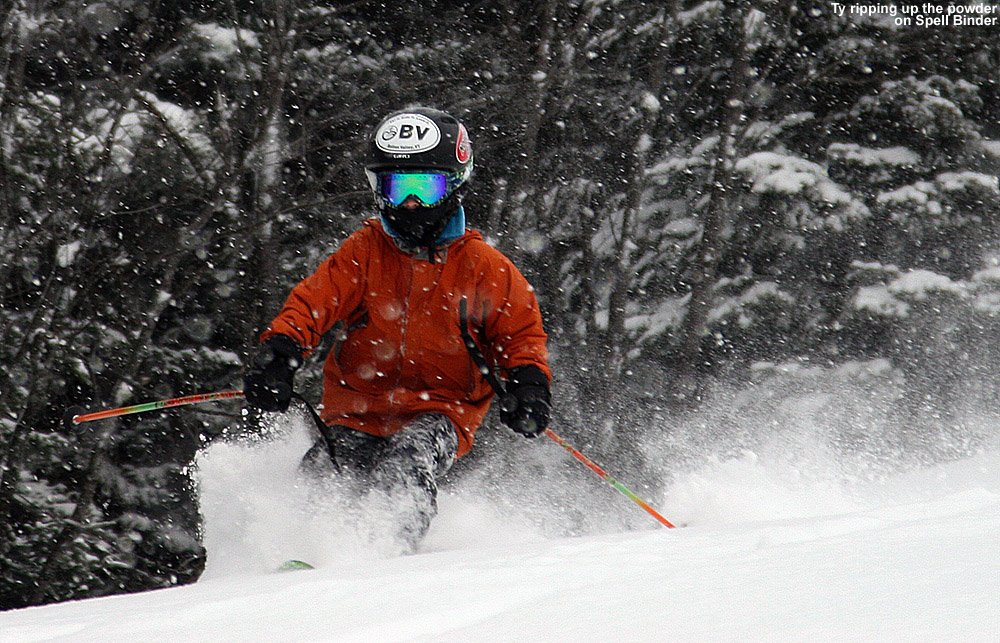
I was worried about the cold today due to the potential wind chill, but it turned out to be a fine day with temperatures in the 20s F and only minor breezes. We’ve got more snow falling tonight with the potential for four more storms to pass through the area this week. It could be an excellent holiday period for skiing if the potential storms hit our area as snow. The mountain is already opening up lots of natural snow terrain, so the snowpack is building with the weather pattern we’re in. The Mt. Mansfield Stake just hit 42” today, and that is a sign that off piste skiing should be well under way.
